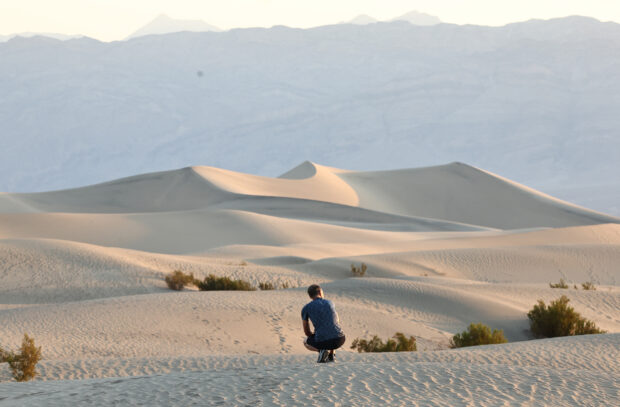Deadly, record-breaking heat wave grips western US

A visitor rests shortly after sunrise, when temperatures are less hot, at Mesquite Flat Sand Dunes during a long-duration heat wave which is impacting much of California on July 9, 2024 in Death Valley National Park, California. Park visitors have been warned, “Travel prepared to survive” as temperatures are predicted to reach close to record highs this week. Death Valley is the hottest and driest place in the United States. (Getty Images via AFP)
Records smashed
Though the Pacific Northwest is known as being generally more temperate than the deserts in the US Southwest, temperatures there remained elevated Tuesday after the Oregon capital Salem hit a daily record of 103 degrees (39.3 degrees Celsius) over the weekend. “This is a record-breaking heat wave,” Daniel Swain, a climate scientist with the University of California, Los Angeles, said during an online news conference over the weekend. Some people in California, he said, had seen “not only the hottest day they’ve ever experienced but also the hottest day that their parents or grandparents ever would have experienced.” The high temperatures also contributed to extreme fire conditions in California, where thousands of acres burned in active wildfires up and down the state. Northwest of Santa Barbara, the Lake Fire burned nearly 27,000 acres (110 square kilometers), prompting evacuations and road closures Tuesday. The heat wave comes in the aftermath of the Earth’s hottest June ever recorded, according to the EU’s Copernicus Climate Change Service. Recurring heat waves are a marker of climate change caused by humanity’s use of fossil fuels, according to scientists.
READ NEXT
EDITORS' PICK